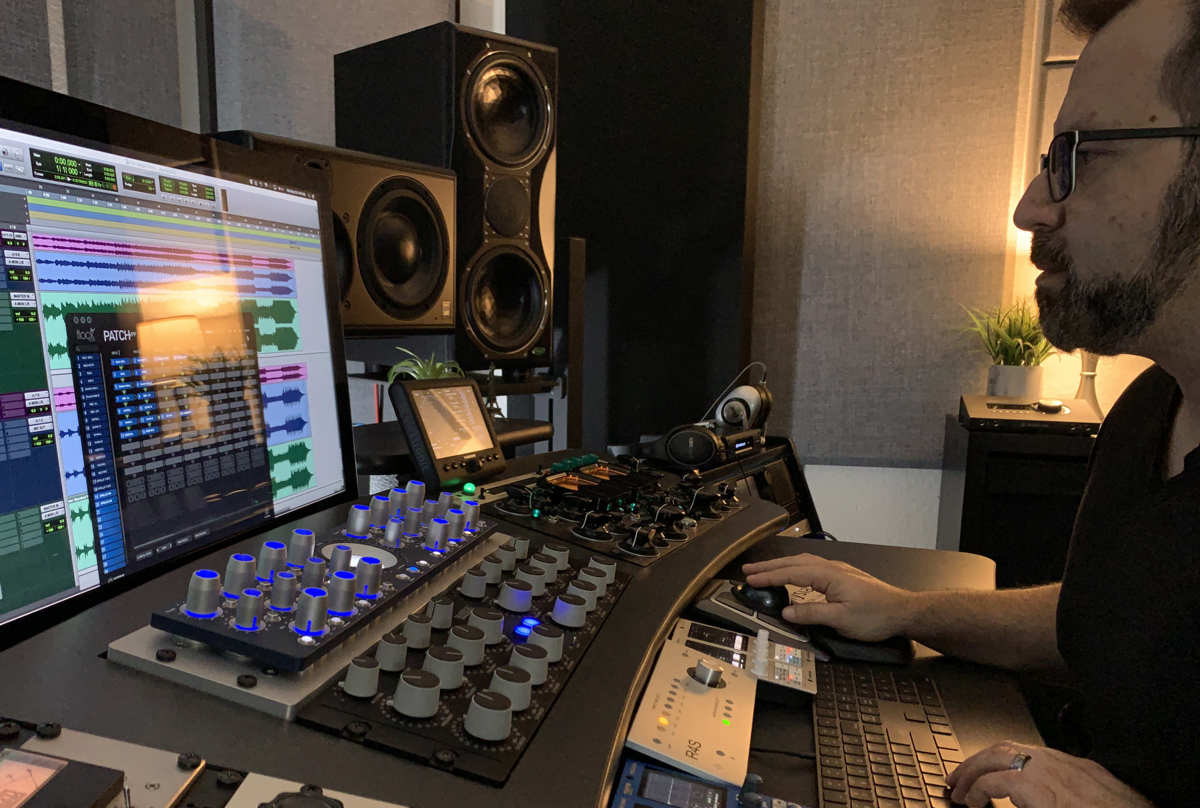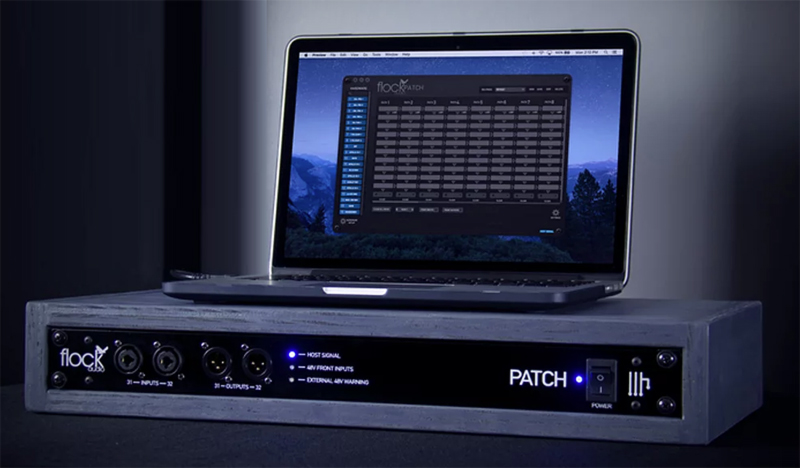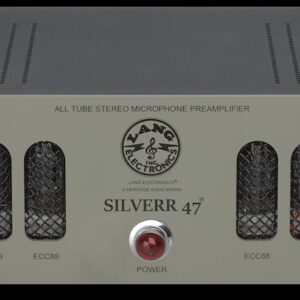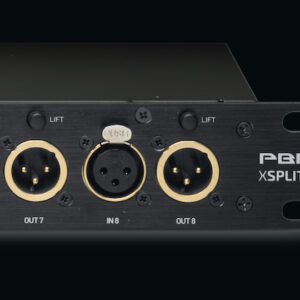
We only recommend products that we use and believe in. When you purchase through links on our site, we may earn an affiliate commission.
With the PATCH digitally controlled analog audio patch bay routing system, Pimentel can move from EDM, to Bossa Nova to Heavy Metal — quickly recalling sonic flavors that resonate for each genre
Lucas ‘Luke’ Pimentel is a Brazilian native who came to LA sixteen years ago to become part of what he calls music’s ‘fusion capital of the world’. With hundreds of international songwriting, mixing and mastering credits under his belt, he became a full-time mastering engineer years ago and never looked back. His fluency in multiple languages and musical genres has helped him develop relationships with artists from all over the world. Pimentel was an early adopter of Flock Audio’s PATCH system, which has since become an indispensable tool in his trade.
“The world of mastering is wild,” he says. “I can go from an R&B song to a Brazilian Bossa Nova in a matter of two or three hours, and then switch back to heavy metal and into an EDM tune from a DJ in Sri Lanka. You’ve got to be able to capture the spirit of what these artists are trying to communicate, and I have become something of a ‘bridge’ for a lot of international artists and mix engineers. Since I work across so many different genres, I need to have every sonic possibility at my disposal as I consider things like compression, EQ, conversion and anything else that impacts the sound.” For Pimentel, this is where Flock Audio’s PATCH has made a positive impact on his workflow.
“In the world of mastering, you often see engineers that excel in one specific genre; for instance, EDM, indie or another musical style,” he explains. “Each one of these ‘specialists’ may have different sonic requirements. For instance, an EDM mastering engineer might focus on making something sound louder, while an indie focused engineer might emphasize the dynamics. Since I am able to quickly move across different possible signal chains, PATCH helps me become whoever I need to be — no matter who is requesting my services.”
Reinventing ‘state of the art’
While groundbreaking artists, producers and engineers continue to advance the field of music production, Pimentel feels that some audio technologies have been left behind. “For decades, patchbays have always been a nightmare for me,” Pimentel says. “I have been to many of the top studios in LA and many of them are using patchbays that are 30 or 40 years old — are you are going to tell me these are reliable and not generating artifacts when you run signal through them?” He says that the moment he plugged PATCH in for the first time, it all clicked: “Why haven’t we had this solution 10, 15, 20 years ago?” he asks. “For me, if I can get more things done and be more productive and achieve great results in lesser time, it is a win-win.”

Before leaping into the world of PATCH, Pimentel was careful to evaluate the transparency and tolerances of the system. “When you are mastering, you are dealing with high SPLs and there is more pressure going through the circuitry,” he explains. “So, I wanted to push a strong signal through and see if I noticed any changes. Also, when I put PATCH in my signal chain, I listened very carefully for any kind of difference in the sound, and I didn’t hear anything. I trust what I hear and get paid to make judgement calls and apply that judgement. And to me, the sound didn’t change.”
Exponential time savings
In the world of mastering — where a multitude of projects can move in and out of the studio in less than a week — time is of the essence and efficiency is at a premium. While working on a recent project by Russian EDM artist Marigu, Pimentel was able to patch the final routing of the master into three different converters to see if the client had a preference. “That’s when I decided that this thing is money,” he says. “In one single print, I was able to route PATCH to three different converters and print all of them out in real time.” This also enabled him to evaluate each master print side by side in an A/B/C scenario. “This is what got me most excited, when I realized what a time savings that PATCH could create for me.”
While he appreciates the time savings gained working at his own studio, he regrets losing valuable time working in other environments hosting older, unreliable patchbay systems: “You will be halfway through a song and you start hearing this buzz,” he observes. “Then, you go back and realize you have to switch patch cables or choose a different channel because that one is busted. And you are talking about places that cost a couple thousand dollars per day to be there, so it can be frustrating.” Pimentel hopes that more studios will adopt the PATCH system because it makes the patching process more seamless, while bringing old and often unreliable technology into the 21st century. “I want to spend my time in the studio being creative and not troubleshooting; particularly when an artist is sitting right beside you waiting for a problem to be solved.”
A no compromise solution
“With PATCH, I didn’t want to make any compromises and didn’t need to,” Pimentel concludes. “Now, I can quickly understand what every single piece of gear is doing so I can use it to its full potential. Knowing that I can quickly switch the order of things at the click of a mouse, and invest more time learning the gear — rather than spending my time trouble shooting patchbays — is worth the price of admission.”
To learn more about Flock Audio, please visit http://www.flockaudio.com.



